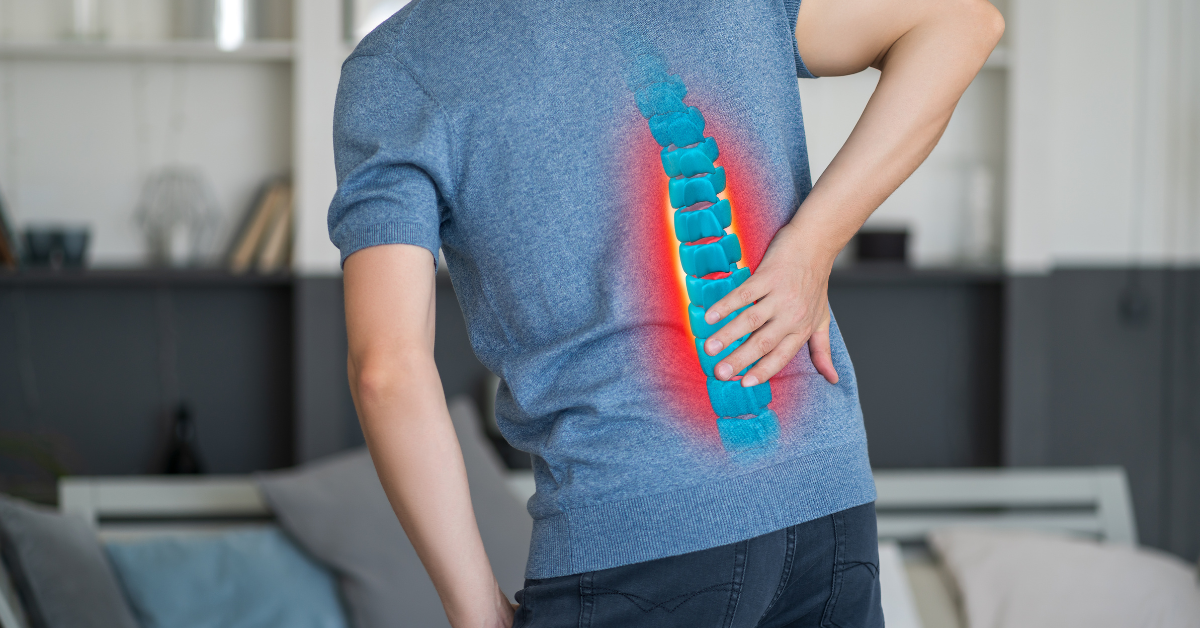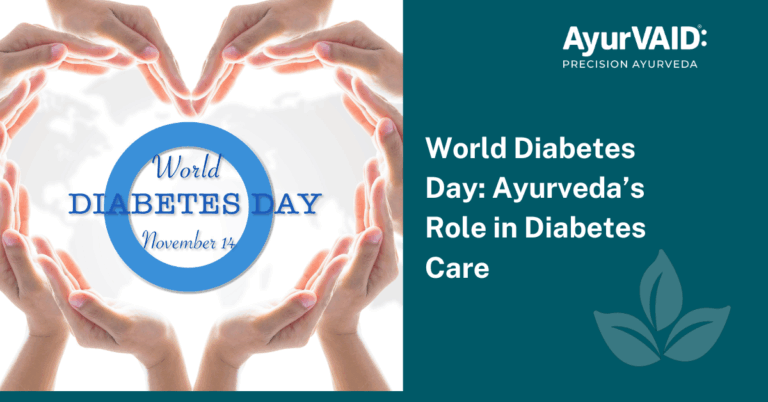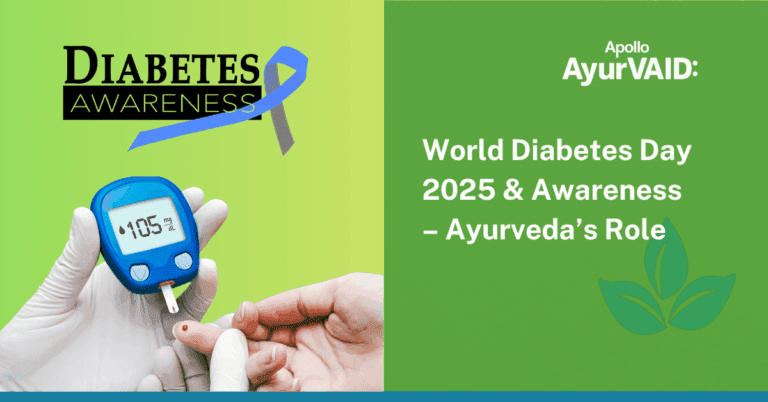Introduction
Sciatica, or Gridhrasi in Ayurveda, is a condition resulting from compression or irritation of the sciatic nerve, leading to radiating pain from the lower back to the legs. The first signs of sciatica often come as sharp pain, tingling, numbness, or weakness in one leg. Symptoms of sciatica nerve problems may range from the inability to stand or walk because of discomfort and stiffness.
In Ayurveda, Vata dosha aggravation leads to the compression of nerves and inflammatory changes, resulting in muscle stiffness. Ayurveda supports recovery from sciatica through comprehensive approaches, herbal medicines, and lifestyle modifications to normalize Vata and restore nerve function.
It is important to monitor progress during recovery, and signs of sciatica improvement can show that the Ayurveda treatment is responding well. In this blog, let us explore seven sciatica improvement signs indicating that pain relief and nerve healing have begun along with Ayurveda intervention for the condition.

What Are the First Signs of Sciatica?
The term Gridhrasi suggests the characteristic gait of the patient suffering this condition resembles that of a Ghridhra (vulture), because of extreme pain. Vata plays an important role in pathogenesis of Gridhrasi along with Kapha. An imbalanced Vata is believed to lodge at Kati Pradesha (lumbar region).
In Ayurveda, the first signs of sciatica are:
- Ruk (Pain): It tends to be a very important symptom, starting from the lower back and going down the leg.
- Stambha (Stiffness): The person complains of stiffness of the lower back and legs, rendering movement difficult.
- Toda (Pricking Sensation): There may be a pricking or tingling feeling in the affected leg, suggesting involvement of a nerve.
- Difficulty in Walking: Complaints of a querulous patient are that he is unable to lift his legs or walk; he has to put his limbs together in order to walk. Such a gait resembles that of a vulture.
- More Symptoms: These include Gaurava (heaviness), Tandra (drowsiness), and Aruchi (loss of appetite).
These symptoms of sciatic nerve problems reflect the vitiation of the Vata dosha, which is central to the Ayurveda understanding of sciatica.
Sciatica Improvement Signs
If you have undergone treatment or are undergoing treatment, or are just letting the body heal from sciatica, then you need to know what positive changes to look for. Here are the seven signs that indicate recovery from sciatica:
- Reduced Pain Level: Clearly, a primary indicator of improvement is the considerable reduction in your leg pain intensity. There will be times when your pain is not as sharp, occurs less frequently, or doesn’t radiate as far down the leg as it used to. Your physician can track your pain levels using a visual analog scale (VAS) to better assess this progress.
- Mobility Increases: With improvement in sciatica, you experience better mobility and less discomfort while moving. Daily movements of getting up, standing, walking, and bending become much less painful.
- Improved Strength: Most often one bothering symptom of sciatica will be muscle weakness in the affected leg. As the nerve irritation subsides, you should start to take note of general improvement in the strength of your leg muscles. This could include being able to lift your foot better, push off more effectively when walking, or perform other movements with greater ease.
- Improved Functionality: Improvement ultimately lies in returning to normal daily activities without much pain or limitation. You might find it easier doing house chores or returning to hobbies or even back to work. Increased numbers in daily activities without significant pain or limitations reflect improvement in overall function.
- Need for Analgesics Reduced: You will begin finding your sciatica better and, consequently, you are not taking pain medication as often. Reduced dependency on pain medication or the requirement for any other intervention reduces.
- Good Response to Physical Therapy: When you’re partaking in physical therapy, another indication of improvement is the capacity to do exercises and then have them relieve symptoms more obviously, improving. This means the underlying problems that have been causing your sciatica are being taken care of. If exercises in physical therapy were becoming easier and more successful, that is a good sign of recovery.
- Improved Sleep Quality: Chronic pain, in this case, pain owing to sciatica, greatly disrupts sleep. As the symptoms lessen, better sleep is indicated with less pain during sleep. Waking up with less stiffness and lesser leg pain is a significant sign of improvement from sciatica.
Sciatica – Ayurveda Treatment
Ayurveda states that trauma affecting the lower spinal cord can result in Gridhrasi, whereas even slight stress can lead to some functional changes in the area that might predispose one towards it. The disease is named after the kind of pain felt and how the patient walks.
The Ayurveda methods for treating Gridhrasi center upon the multi-pronged approach to pacifying aggravated Vata and restoring equilibrium in its manifestation. The major treatments include –
- Snehana (oleation): The Internal and external application of medicated oils would help.
- Swedana (sudation): Different types of fomentation can be administered, including Bashpasweda (steam therapy), Pindasweda (bolus fomentation), Valukasweda (sand fomentation), and Rukshasweda (dry fomentation).
- Vamana (emesis) and Virechana (purgation): Both or any one of them is administered based on the imbalance in Pitta and Kapha dosha and the patient’s strength.
- Vasti (enema): Also considered the best among the treatments for Vata disorders, the procedure is indicated for Gridhrasi management.
- Siravedha (venesection): Bloodletting may be performed at sites such as four Angula (fingerbreadths) above and below the knee joint or at the Antara-Kandara-Gulpha (between the tendon and ankle joint).
- Agnikarma (thermal cauterization): Usually, therapeutic heat application deserves to be done where pain’s intensity is more like Kati Pradesha (lumbar region), Uru Marma (thigh), Janu Marma (knee), and Gulpha Marma (ankle).
- Raktamokshana (blood letting): These may be indicated for the Vata-Kaphaja gridhrasi type and for correcting the movement of the Vata dosha.
Alongside a curing endeavor, the Ayurveda approach imposes preventive activities through lifestyle and nutritional means that may fuel further Vata aggravation. Ayurveda treatment aims to provide a permanent and better cure for the disease.
Conclusion
Treatments in Ayurveda relieve aches and pains but also aim to restore balance through holistic therapies such as Snehana, Swedana, Vasti, and herbal medicines. Additionally, signs of improvement in sciatica must be closely monitored to determine one’s recovery as well as the effectiveness of treatment. Natural approaches with a mindful way of living can encompass shaping the performance of the nervous system, mobility, and well-being as a whole. Sciatica can be easily managed by effective continuous care through Ayurveda, ultimately benefitting the quality of life, adding staying power, and relieving the symptoms.

References
- Basnal, P et al. (2025). Ayurvedic Management of Sciatica with Medicated Enema and Bloodletting: A Case Report. Journal of Pharmacology and Pharmacotherapeutics. https://doi.org/10.1177/0976500×241309446
- Pandey, A K, Yadav, P (2023). A CLINICAL STUDY TO EVALUATE THE EFFICACY OF RAKTAMOKSHANA AND ERANDAMOOLADI NIRUHA BASTI IN SCIATICA-A REVIEW. International Ayurvedic Medical Journal. https://doi.org/10.46607/iamj1211082023
- Ninama, D S et al. (2023). A Case Study of Agnikarma Therapy in the Management of Gridhrasi w.s.r. to Sciatica. Asian Journal of Pharmaceutical Research and Development. https://doi.org/10.22270/ajprd.v11i4.1306
- Soman, C et al. (2024). An Ayurveda Approach Towards Acute Sciatica with Paraesthesia. International Journal of Ayurveda and Pharma Research. https://doi.org/10.47070/ijapr.v12i5.3244
- Harmanpreet, K et al. (2024). Effect of Shampakadi Niruha Basti along with Patra Pinda Swedan in the Management of Gridharsi w.s.r to Sciatica. International Journal of Ayurveda and Pharma Research. https://doi.org/10.47070/ijapr.v12i2.3133






